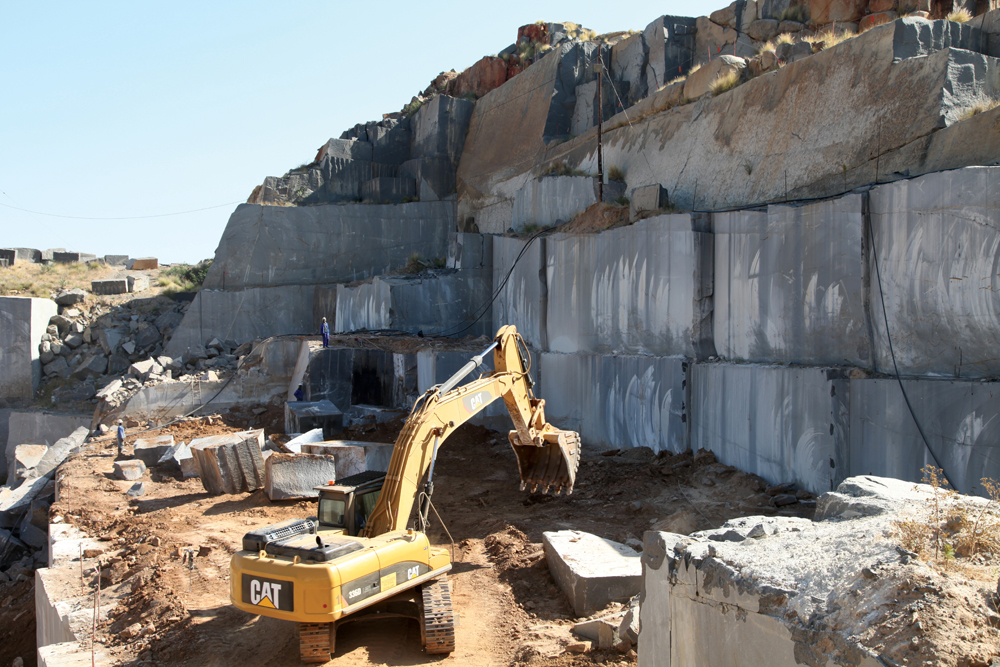The Covert Treasures: Checking Out Granite Quarries in South Africa
The Covert Treasures: Checking Out Granite Quarries in South Africa
Blog Article
Uncovering the Rich History and Sustainable Practices of Granite Quarrying
As we stand on the precipice of revealing the elaborate tapestry of granite quarrying, a journey via time exposes not just the physical act of removing stone yet likewise the social and historical relevance woven right into the extremely fabric of this practice. From the ancient origins that laid the structure for modern quarrying strategies to the sustainable methods that are forming the future of this sector, each chisel mark on granite surface areas informs a story waiting to be discovered (granite quarries in south africa). The heritage of granite quarrying stretches far past simple removal; it is a testament to human resourcefulness, resilience, and the long-lasting allure of this impressive rock
Ancient Beginnings of Granite Quarrying
Going back to old worlds, the practice of quarrying granite has actually been an essential part of human history and building advancement. The earliest proof of granite quarrying dates back to ancient Egypt, where large pyramids and detailed sculptures were crafted from this durable stone. The Egyptians utilized primitive tools to extract granite blocks from quarries, showcasing the significance of this material in their significant buildings.
Progressing in background, the Greeks also made considerable contributions to the quarrying of granite. The Greeks utilized granite in various architectural marvels, such as temples and statuaries, showing their ability in shaping and sculpting this sturdy rock. The Romans further improved the strategies of quarrying granite, using sophisticated tools like blades and hammers to extract and shape granite for their legendary frameworks.
Via the centuries, the method of quarrying granite has evolved, with modern innovations boosting effectiveness while preserving the ageless allure of this natural rock - granite quarries in south africa. From old civilizations to contemporary contractors, the tradition of granite quarrying proceeds to form our globe
Development of Quarrying Methods
The evolution of quarrying techniques has been marked by a constant development in the direction of better effectiveness and accuracy in extracting granite. From the primary techniques used by our ancestors to the advanced technologies utilized in modern quarrying operations, the industry has actually undertaken considerable developments. Early quarrying methods entailed manual work with standard tools such as blades, hammers, and wedges to extract granite blocks from the earth. As civilizations proceeded, strategies like fire-setting and primitive dynamites were presented to assist in the removal process.
Improvements in computer-controlled tools and 3D modeling have enhanced quarrying procedures, leading to very little environmental impact and improved sustainability techniques. As the need for granite proceeds to climb, the evolution of quarrying methods continues to be important to meeting industry requires efficiently and sustainably.
Cultural Relevance of Granite
Granite holds an extensive social significance across different civilizations due to its enduring visibility in building masterpieces and respected monoliths. The social value of granite prolongs past its physical characteristics; it embodies durability, security, and eternity, making it an icon of sustaining legacies and practices.

Lasting Practices in Quarrying
In the middle of the rich background of granite quarrying and its social importance exists an expanding emphasis on lasting methods within the industry. As ecological recognition and issues about source depletion have actually increased globally, the quarrying field has actually increasingly welcomed sustainable approaches to reduce its effect on the environment and bordering communities.

Furthermore, recovery and recovery of quarry sites post-extraction are indispensable to lasting practices. By bring back quarried areas to a natural or useful state, such as developing wild animals environments or important site leisure areas, quarriers can offset the environmental footprint of their procedures and add positively to the local community.
Legacy of Granite Quarrying
With a historical backdrop steeped in craftsmanship and commercial progression, what withstanding effect has granite quarrying left on the landscape of modern society? The tradition of granite quarrying transcends plain removal methods; it has formed architectural wonders, metropolitan landscapes, and cultural heritage worldwide. The resilient nature of granite has actually made it a preferred option for monuments, buildings, and framework, standing as a testimony to the skill and virtuosity of quarry workers across generations.
In addition, the financial footprint of granite quarrying can company website not be overlooked. The sector remains to give employment possibility and drive regional economic climates in areas where granite extraction prevails. It has actually likewise spurred technical improvements in quarrying techniques and tools, resulting in extra read more efficient and lasting methods.
In terms of sustainability, the heritage of granite quarrying includes efforts to minimize environmental influences through improvement projects and accountable resource monitoring. By stabilizing economic interests with environmental stewardship, the sector strives to guarantee that future generations can proceed to take advantage of this enduring natural deposit.
Verdict

Report this page